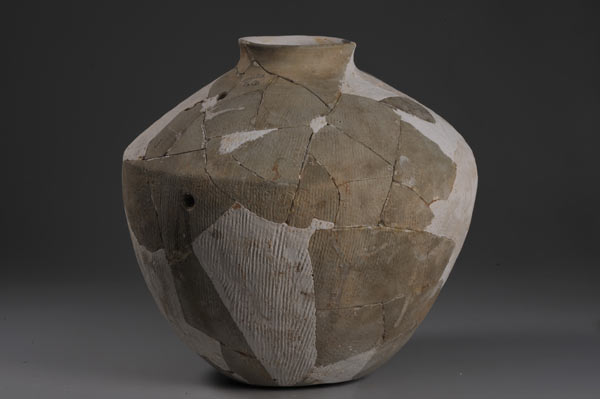Ruins of over 3,000 years ago excavated
 0 Comment(s)
0 Comment(s) Print
Print E-mail China Daily, February 11, 2014
E-mail China Daily, February 11, 2014
Archaeologists have made important discoveries in the excavation of an ancient building dating back to the late Shang Dynasty (1600-1100 BC).
|
An ancient item excavated from Xinzhuang Ruins. [Photo/Chinanews] |
According to the Shaanxi Institute of Archaeology, which sent a team to excavate the ruins, the important discoveries include the remains of the building, edging walls, cemeteries and a number of cultural relics.
The site is called the Xinzhuang Ruins as it is located in Xinzhuang village, Qingjian county.
Zhong Jianrong, head of the archaeological team, told China Daily the archaeological excavation started at the end of 2012, when the ancient ruins were suffering illegal excavations.
"Our team focused on the extraction of rammed earth remains on the mountain top, while also cleaning up the platforms and sidewalls around the ruins' area from April to December in 2013, in order to find out the age of the rammed earth remains and the layout structure and properties of the ruins," Zhong said.
The excavation area is some 1,000 square meters, in which the archaeologists found large construction bases and ancillary facilities, as well as a number of cultural relics including containers made of pottery, bone, copper, stone and shells, and stone knives and axes.
Zhong said the most important discovery was a group of large buildings with a main building and two levels of corridors, which covered an area of 770 sq m.
"From the construction styles and the relics, we believe the ancient buildings were built in the late period of the Shang Dynasty," Zhong said.
The total area of the Xinzhuang Ruins is more than 4,200 sq m, which is the second-largest ancient ruins discovered after the Yinxu Ruins in Anyang, Henan province. The Yinxu and Xinzhuang Ruins were both built in the late Shang Dynasty.
The archaeological achievements at Xinzhuang Ruins have great significance for the study of political geography in Shang Dynasty, Zhong said.







Go to Forum >>0 Comment(s)